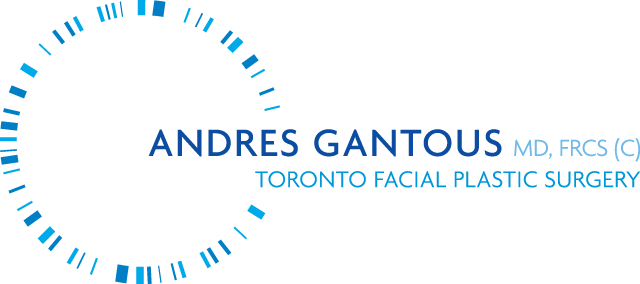Facelift and facial rejuvenation procedures are among the most popular anti-aging remedies in North America—particularly among middle-aged adults who are trying to reverse the effects of aging. Over time, skin loses its natural elasticity as collagen production slows down or stops altogether. When that happens, fine lines, wrinkles, sagging skin, and dark spots can take over your face. Fortunately, there are a number of facelift types that include both surgical and non-surgical options that can help you restore a naturally youthful appearance.
If you’re unhappy with the way your face is looking lately and would like to make a positive change in your life, then undergoing a facelift procedure could be the right choice for you!
"*" indicates required fields
Main Categories of Facelifts
Similar to other facial plastic surgery procedures, facelifts fall under two distinct categories: surgical and non-surgical. It’s up to the patient and their doctor to decide which option is the right one on an individual basis.
For personal or medical reasons, some patients might be more comfortable opting for a non-surgical facelift while others might be perfectly comfortable with undergoing a surgical facelift. Ultimately, this is something you should discuss with your facial plastic surgeon during your initial consultation.
The key is to be honest with what your goals are for this procedure and what you hope to achieve. Based on that and an in-depth analysis of your facial structure, your facial plastic surgeon will then explain your best options to you. Before committing to a specific facial plastic surgeon, though, it’s also in your best interest to seek out multiple opinions just to be sure. Remember, plastic surgery isn’t a one-size-fits-all solution and plastic surgeons usually specialize in a specific field.
Types of Facelifts
If you’re considering undergoing a facelift, there are nine types of facelifts that you should know about. Keep in mind that each facelift type targets a different portion of your facial structure.
1. Deep Plane/SMAS Facelift
The purpose of a deep plane facelift is to eliminate the look of sagging skin at the base of the chin and neck by lifting up and strengthening the lax muscles in that portion of the face. Deep plane facelift procedures involve the surgeon delving beneath the musculoaponeurotic system (SMAS). Located under the skin close to the muscles used for smiling and frowning, your surgeon will reposition, reshape, and smooth out the SMAS layer to iron out wrinkles and make you look younger and more radiant.
2. Mini Facelift
This is a surgical facelift technique that uses small, inconspicuous incisions under the hairline so that your surgeon can skillfully tighten and smooth out your skin while also removing excess tissue. A mini facelift is usually effective in reducing the appearance of jowls or eliminating it altogether. Jowls usually form around the lower half of your cheeks and mouth as a result of reduced collagen production as you get older.
3. Mid-Facelift
As the name implies, the mid-facelift targets the midsection of the face, particularly the cheeks. Unlike a cheek implant, though, implants aren’t added to the cheeks to plump them up. Instead, your facial plastic surgeon will either remove excess tissue or use existing tissue to lift up the cheeks, eliminate sagging, and remove fine lines and wrinkles. The mid-facelift is highly recommended for patients who don’t have jowls or marionette lines. However, it can also be performed in conjunction with procedures that remove jowls and marionette lines as well.
4. Cheek Lift
Much like the mid-facelift, the purpose of a cheek lift is to enhance the appearance of the cheekbones while also removing or reducing the look of fine lines and wrinkles in the mid-face area. A cheek lift can help you achieve that voluminous, uplifted appearance you want while also eliminating under-eye puffiness and contouring nasal folds, so that they’re less pronounced.
5. Jaw Line Rejuvenation
Most people—especially women—exhibit signs of aging around their jaw and neckline. A jaw line rejuvenation involves extracting excess fat cells from the neck area through neck liposuction. The purpose of this procedure is to allow your surgeon enough space to contour and reshape your jaw line to make it smoother.
6. S-Lift
The reason this procedure is called an S-Lift is because an s-shaped incision is made on the lower half of the face around the neck and jaw line. This allows the surgeon to separate the top layer of skin from the facial muscles and tissues underneath. The purpose of this procedure is to lift up the skin, remove excess fat cells, and contour the muscles and underlying tissue, resulting in smooth, wrinkle-free skin.
7. Cutaneous Lift
A cutaneous lift also focuses on the lower face area, including the jaw and neck. Inconspicuous incisions are made around the hairline and the ears. From there, your surgeon will then separate the top layer of skin from the muscles and tissues underneath. Excess skin is cut out and removed and discarded. The remaining skin is stretched all the way to the incision areas. Lastly, the incisions are sealed with sutures. Stretching your skin essentially has the same effects as ironing your clothes: the skin is tightened and the wrinkles are ultimately removed.
8. Temporal or Brow Lift
Since your temples and brows are within such close proximity to one another, smoothing out wrinkles in one area also inadvertently benefits the other area of the face as well. If your eyebrows are droopy or hang too low, then this could be the right procedure for you. An excellent alternative to the much more invasive eyebrow lift, which requires a longer recovery time, the brow lift is a lot faster and more convenient. A small incision is made along your hairline and then the skin and underlying muscles are lifted up to stretch out the drooping skin on your eyelids.
9. Liquid Facelift
Liquid facelifts are by far the most popular type of facial rejuvenation procedures currently being practiced across North America. Known for its simplicity, time-efficiency, and non-invasive nature, a liquid facelift involves the use of an injectable serum such as Botox, Restylane, Dysport, or Juvederm being injected into your face to target the problem area. These serums usually have measured concentrations of collagen or hyaluronic acid, which stimulate collagen production and promote skin elasticity.
Are you thinking about getting a facelift, but aren’t sure which option is right for you? A consultation with one of the most renowned facial plastic surgeons in the world, Dr. Andres Gantous at Toronto Facial Plastic Surgery will give you all of the information you need. Contact us today to book your first consultation!

